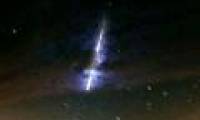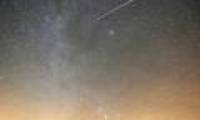
In the morning of 13 and 14 months, astronomers can watch the meteor shower Geminids. This is also the last meteor shower of 2016.

Viewers who do not need any astronomical device can still see the largest meteor of the five Geminids with 120 tracks an hour at their peak.

It rained, cloudy hindered the observation of the largest meteor shower in the North, while the South could be better.

Although it can be brilliance for billions of years, our sun-like stars do not exist forever, and by the time of their death, their deaths have never been quiet, but more brilliant

Astronomers all over the world record spectacular scenes when Geminid meteor shower peaks on December 13-14.
 In the morning of 13 and 14 months, astronomers can watch the meteor shower Geminids. This is also the last meteor shower of 2016.
In the morning of 13 and 14 months, astronomers can watch the meteor shower Geminids. This is also the last meteor shower of 2016. Viewers who do not need any astronomical device can still see the largest meteor of the five Geminids with 120 tracks an hour at their peak.
Viewers who do not need any astronomical device can still see the largest meteor of the five Geminids with 120 tracks an hour at their peak. It rained, cloudy hindered the observation of the largest meteor shower in the North, while the South could be better.
It rained, cloudy hindered the observation of the largest meteor shower in the North, while the South could be better. Although it can be brilliance for billions of years, our sun-like stars do not exist forever, and by the time of their death, their deaths have never been quiet, but more brilliant
Although it can be brilliance for billions of years, our sun-like stars do not exist forever, and by the time of their death, their deaths have never been quiet, but more brilliant Astronomers all over the world record spectacular scenes when Geminid meteor shower peaks on December 13-14.
Astronomers all over the world record spectacular scenes when Geminid meteor shower peaks on December 13-14. NASA's 'Ninth Planet' Shows Signs of Being Friendly to Life
NASA's 'Ninth Planet' Shows Signs of Being Friendly to Life Why did American astronauts have to be quarantined when returning to Earth?
Why did American astronauts have to be quarantined when returning to Earth? China surprises the world by building a cable-stayed bridge 'above the clouds'
China surprises the world by building a cable-stayed bridge 'above the clouds' Why do women sleep less and wake up more than men?
Why do women sleep less and wake up more than men? Revealing the secret inside the stuffed animal claw machine, from there, summarizing experience to help you increase your winning rate many times over
Revealing the secret inside the stuffed animal claw machine, from there, summarizing experience to help you increase your winning rate many times over What would happen if you dug a hole through the Earth and jumped in?
What would happen if you dug a hole through the Earth and jumped in? Camera takes a photo that lasts 1,000 years
Camera takes a photo that lasts 1,000 years Was there nuclear war in ancient times?
Was there nuclear war in ancient times?